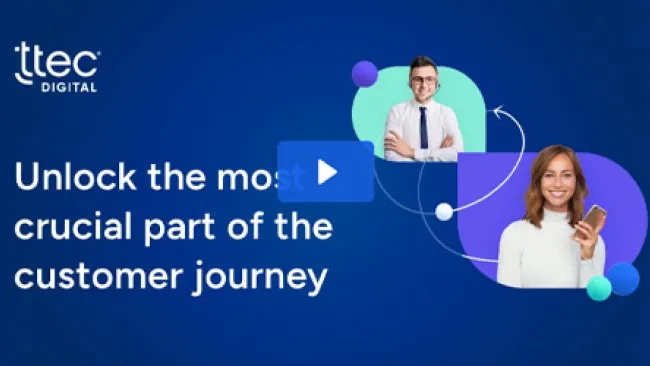Today, brands coexist in a complex digital world, where some brands that once seemed invincible are losing the race of time.
David Rogers, who teaches senior executives digital business strategies and leadership at Columbia Business School, recognizes the unique opportunities of digital transformation for new and legacy companies alike. His newest book, The Digital Transformation Playbook, addresses the wide range of industries that are now coming to terms with the necessity of digital transformation. We talked with Rogers about how it takes more than flashy tech to succeed in transforming business.
Customer Strategist: How do you define digital transformation?
David Rogers: Digital transformation has become a bit of a buzzword. When I’m speaking at a conference I sometimes wonder if everyone in the audience has a different definition in mind at the start.
To me, digital transformation is actually a question: How does a business that started before the internet adapt and evolve to reach its next stage of profitable growth in the digital era?
And I stress that it’s quite a different question than, “How can I create a new business from scratch?” To build a terrific startup is one thing: Look at the market, new technologies that are emerging, customer needs, and identify a great opportunity. But it’s a different challenge with an established organization that has customers, distribution channels, a brand reputation, assets, and investments. In many ways, these are strengths, but they can also pose challenges.
Digital transformation is really a question of how we bring change to an existing organization to seize the opportunities available to us today and respond to digital threats that may be quite different than the threats that we built our company to compete against.
CS: You’ve said that digital transformation is about strategy, leadership, and a new way of thinking. Do you think we are heading into this direction in 2018?
DR: This is the key message of the book, if I were to put it into one sentence, and it’s something I’ve been stressing with all the companies I work with. I do find that leaders are coming to this realization. We are seeing a shift from thinking about digital transformation as a technology problem that would have been solved by your CIO putting together a technology road map, and instead recognizing that the more fundamental challenge is changing the mindset of your organization. You need to understand your own business in a very different way; to recognize some of the assumptions that you’ve held in terms of your firm’s strategy which are suddenly outdated. I often say that many businesses are still playing by rules they don’t even recognize but are completely out of date in the digital era.
CS: What are some common digital transformation mistakes?
DR: One of the mistakes companies make as they try to be more digitally focused is to think technology-first, such as AI or big data initiatives. These may be part of the right strategy for your business, but it’s the wrong approach to start by looking at the technology before your own firm and customers. In other firms, you’ll see isolated digital projects without a coherent integration between them. You have pockets of activity and maybe some real innovation in isolated parts of the organization, but there’s no coherent coordination or structure.
Which brings up another problem, which is a lack of a vision. You can’t act on a digital transformation until you develop a viewpoint of where your industry is going. What are the terms on which you aim to compete in this digital future? Only then can you start to figure out which technologies and strategies are right for your business.
CS: What lessons do you impress upon executives to consider about digital transformation?
DR: I try to spur executives to rethink five big domains of strategy. The first is customers. Rather than think about your customers as an audience that you are marketing and delivering to, every business needs to think of customers as a network that is digitally connected, that you can interact and collaborate with.
We look at competition as a second domain, and reframe it to understand how competition today is much less of a zero-sum game, just competing with companies who look exactly like you. Instead, competition in the digital age is more about “asymmetric” competition across industries. It’s about competing for leverage and influence with other firms that have different business models and can be both your competitor and your partner at the same time.
We look at data as the third domain. How is the role of data changing in businesses? How is data shifting from being a part of how you operate your business, to becoming a strategic asset that will allow you to invest, grow, and build value with new products and services?
The fourth is innovation. We seek to understand how innovation processes must change radically if we are going to find new products, services, and business models at a more rapid rate and under greater uncertainty. This is critical to keep up with the pace of the digital era.
And lastly, we talk about value and the importance of continuously adapting and redefining your own value proposition. Rethinking and re-asking the question, “Why do we exist, why does the world need our business?” to see and anticipate the changes coming in the marketplace.
CS: How can large legacy companies compete with the digital-only players?
DR: Many of the fastest-growing new digital firms are what we call “platform business models.” Those are companies that create value by facilitating direct interaction between two or more distinct types of customers. I think it’s critical for traditional firms to understand the new business models of the digital era and to be able to strategically choose the ones they are going to try to pursue and develop.
And they certainly make it harder in terms of the pressure that they can have on the industry. Platforms can scale extremely rapidly because they are creating value by connecting others rather than having to build all the assets themselves.
But certainly, I would say that legacy businesses that are facing a platform competitor in their industry must carefully think about strategic options. Do you want to partner with that platform? Do you want to try to acquire them? Or do you have the stomach to try and replicate them—to build a platform business that may eat your own existing business?
CS: Can you teach an old dog new tricks? Can older companies truly redefine themselves in the digital age?
DR: I think the key lesson here is that every business model has a life cycle, from discovery through scaling up, to a large mature business, to ultimately decline and disengagement. Where the challenge is to know when and how to effectively exit a line of business that no longer holds future growth opportunities. I think Netflix and Britannica are both great examples of companies that have done it [by moving to subscription models and new channels].
CS: What does the future of digital transformation look like to you?
DR: I think in the future we are going to see a less clear distinction between dynamic fast-growing startups, large established digital players, and unresponsive legacy enterprises. I think, ultimately, every business is a digital business in the future.
And the true test of who will succeed in the long term is not a profitable product or business model, but how adaptable the organization is, how much are they able to build a culture and capability of constant innovation, customer centricity, and the ability to seize new opportunities.















